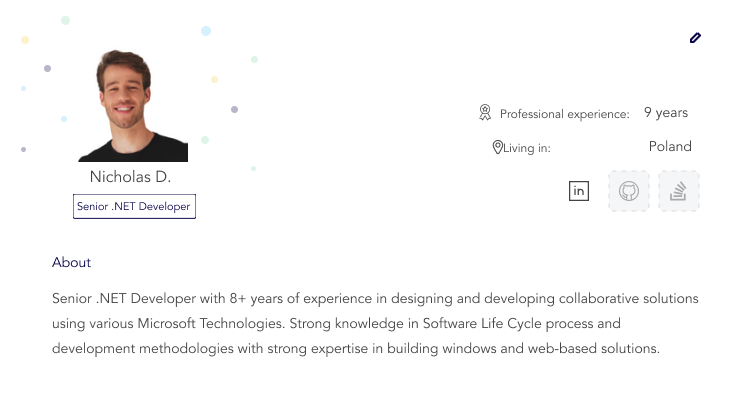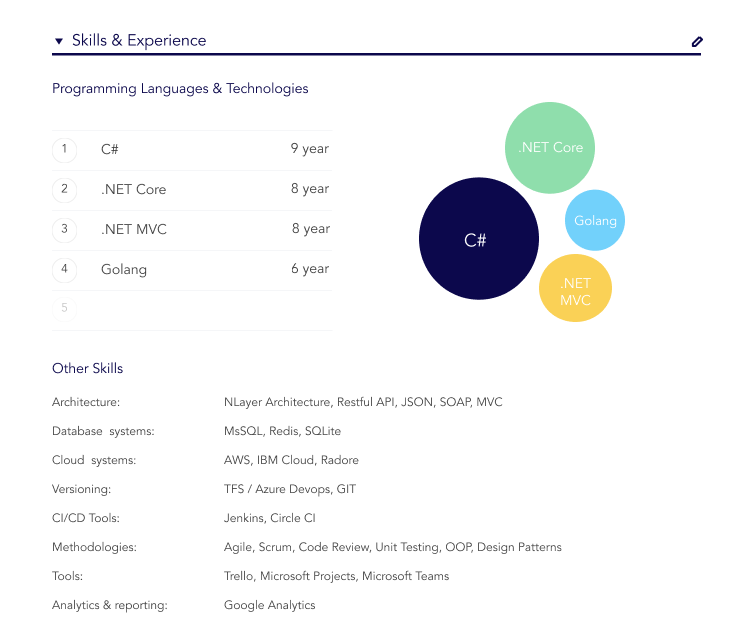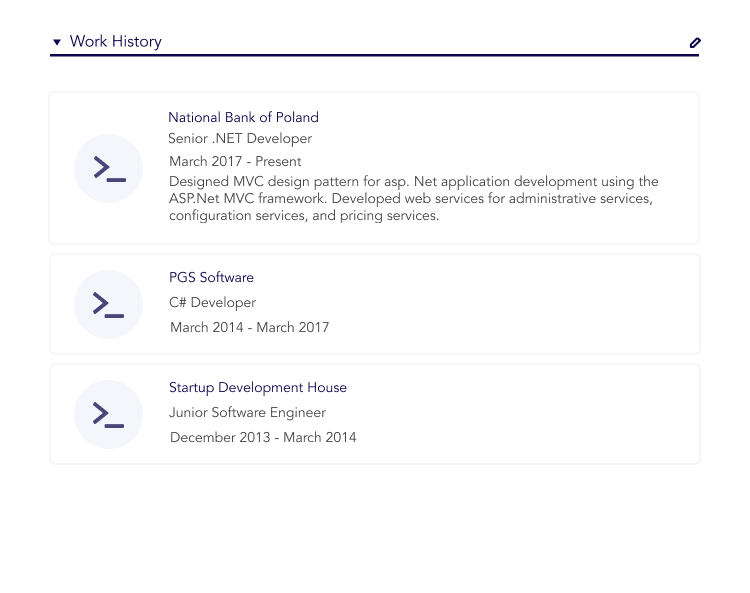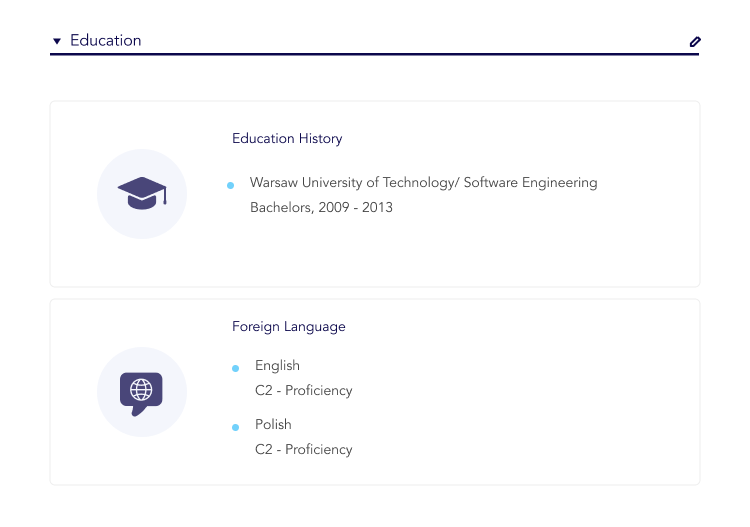
Do you ever feel overwhelmed by the number of resources on how to write that perfect C# developer resume out there on the internet?
We feel you. That’s why we prepared this resume guide to help you get a better understanding of what you need to get started.
C# developers play an important role in the development and design of web and desktop applications. Their responsibilities range from coding and testing to executing programs tailored to customers’ specifications and benchmarks.
Due to the digitalization of the markets, competition within the software development industry is rising substantially. You need to stand out from the crowd to get noticed, and a perfectly-tailored resume is one of the best ways to do that.
That’s why TalentGrid prepared this guide for you to finetune your resume to the position you’re applying for. We’re sharing all the critical information you need to know to start writing an eye-catchy C# Developer resume, including different examples to help you get a better understanding of what your resume could look like.
1. Make a proper introduction
Introduce yourself properly to the reader, including your contact information and headline. When filling in your contact details, make sure to mention your full name, phone number, email address, and other links that could be relevant to the position, such as digital portfolio links.
Whereas your resume headline should reflect who you are as a professional. Making sure your headline is targeted and reflects who you are is a key to communicating your area of expertise and current (last-held) job title. Here you can mention the job role along with your years of experience in that field, such as “Junior C# Developer with two years of experience in start-ups.”
But be careful – customize your headline for each application according to role specifications as they tend to differ from one company to another.

2. Choose an optimal resume format
Whereas if you’re at the beginning of your journey as a C# developer, using a functional resume format could help you highlight your skills rather than the experience you have yet to gain.
A hybrid resume format is also a good option if you’d like to draw equal attention to the sections related to skills and work experience.
3. Skills required for the C# developer resume
See how you stack up with these 5 essential skills for Java developers. (If you are a Junior developer, you may not need to know all the technologies.)
ASP.NET Framework: The ASP.NET framework of the .NET platform allows developers to create web applications with efficient controls, security, and robust technology for scalable, better and faster deployment. Therefore, it is one of the most crucial and in-demand skills for a dot net developer to acquire.
Databases:Having a clear knowledge of different systems and frameworks could give you an upper position over other candidates.
Expertise in Coding: This skill without any doubt should be a part of the .NET developer skills set.
A dot net developer should have proficiency in programming languages like C#, C++, F#, VB.NET, etc for creating applications on .NET.

4. Quantify your accomplishments
Try adding some numbers to your achievements and illustrate your results in a quantifiable manner. This will help you build credibility as a C# developer, having a potent impact on the reader with the help of a quantitative rather than purely qualitative approach.
By including some specific examples of your projects or other side work, you will be able to demonstrate the kind of value you can create for their organization.
5. Describe your professional experience
Keep information regarding your work experience clear and straight to the point. You can use this space to showcase your expertise in the field by using bullet points that communicate your results, achievements, tasks to the reader.
But be precise – make sure to include specific examples of the projects you undertook or challenges you faced quantifying your results if possible.

Your educational history should show the recruiter that you have the necessary qualifications for the role. Provide information on your technical background by mentioning the institutes you attended, certifications or degree you earned, etc., in a well-structured manner.
You can prioritize mentioning educational details relevant to the job, making it easier for recruiters to filter out the key information.

When describing your skills or experience, use C# developer-related keywords associated with the job role. The Applicant Tracking Systems (ATS) scan resumes with the help of skill-specific keywords. If your resume doesn’t include a few of those keywords, it may be discarded from the pool of potential candidates before it even gets to the hiring manager.
But what keywords can you use? You can easily find C# related keywords recruiters are looking for in the position’s job description, typically under the “key skills” section. You can also use keywords, such as integrated, modified, developer, etc.
But, of course, we shouldn’t forget about the importance of using correct grammar and spelling along with those keywords. Make sure your resume is grammatically correct, as a single spelling mistake can cost you a job.
Now that we’ve covered all the key steps in writing an excellent C# developer resume, you can give it a try! But if you’re still feeling unsure of what information would be relevant to the employers, TalentGrid can help you get a step ahead of other candidates.
All you have to do is sign in to TalentGrid’s platform and tell us a little bit more about yourself, along with your skills, experience, preferences, and salary expectations. That way, TalentGrid will be able to find a position that best matches your skills and interests.
TalentGrid saves developers and companies a significant amount of time by placing the information regarding the open tech positions, salary expectations, and more in one place. It also reduces the stress of finding an open-minded, flexible employer with its remote(relocation)-only type of policy.
References: Indeed, CareerCloud





